

Stellar Clusters are useful ``laboratories'' for testing our theories of star formation.
Laboratories are generally thought of as places where scientists can run controlled experiments to test their hypotheses and theories. The galaxy has helped us out to some extent by creating stars in clusters, instead of creating them one by one in random places, at random times, under wildly varying conditions of temperature, density, and chemical composition.
Stars in a cluster formed at the same time, in the same
molecular cloud.
Therefore, stars in a cluster
Thus, when stars form within a cluster, they differ only in their mass. The more massive stars evolve more rapidly, so to find the AGE of a cluster of stars, we need merely determine the mass of the stars which have just now exhausted the hydrogen in their cores and are turning into red giants.
The first diagram is of a cluster which is only 1 million
years old. The cool K & M stars have not yet settled down
onto the main sequence; they are still contracting
protostars, and have not yet ignited hydrogen fusion
in their cores. On the other hand, the hottest O star
has already been converted to a red supergiant.
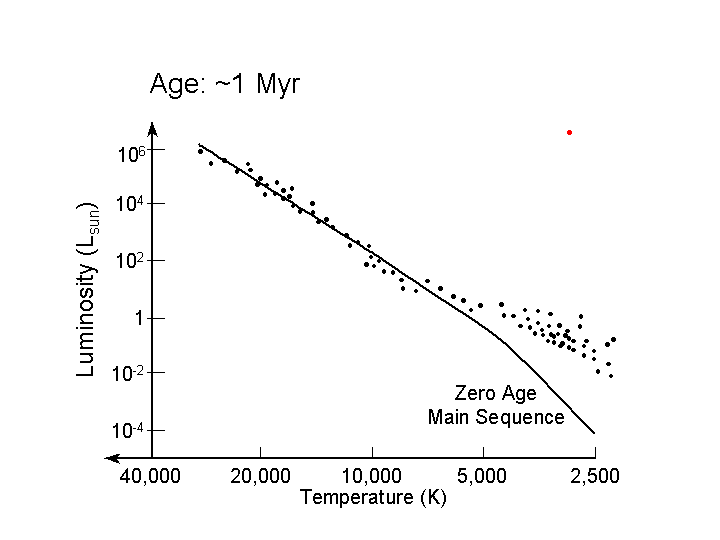 . This would be about a 50 solar
mass star.
. This would be about a 50 solar
mass star.
The next diagram shows the cluster at an age of
10 million years. Here the main sequence turnoff corresponds
to about a 10 solar mass star. The
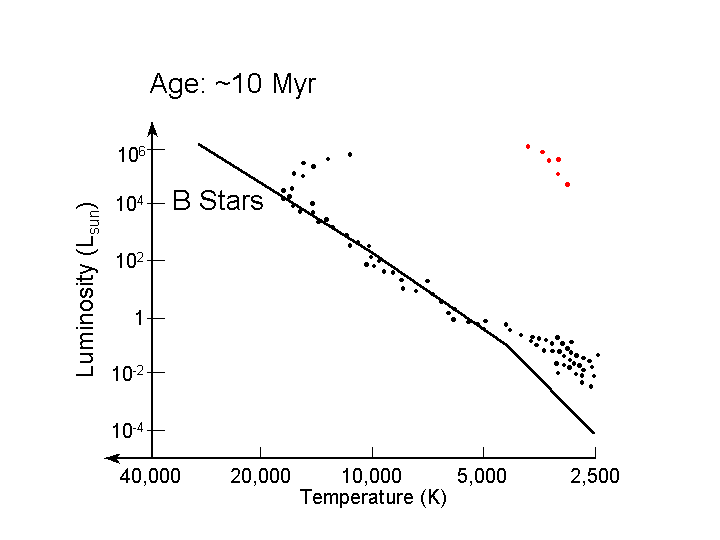
The next frame is of the cluster
that is 100 million years
old. The main sequence lifetime of a 6 solar mass star
is 100 million years, so stars with M = 6 Msun
(L = 530 Lsun, spectral type A) are just
turning off the main sequence.
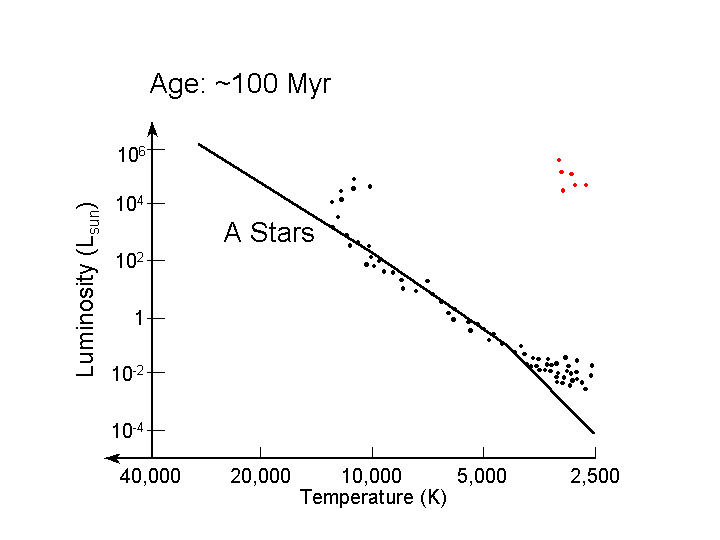
The next frame shows the cluster at an age of 1 billion years, which corresponds to the lifetime of a 2 solar mass star (spectral type F). By this age, a few of the more massive stars have no evolved to populate the white dwarf sequence.
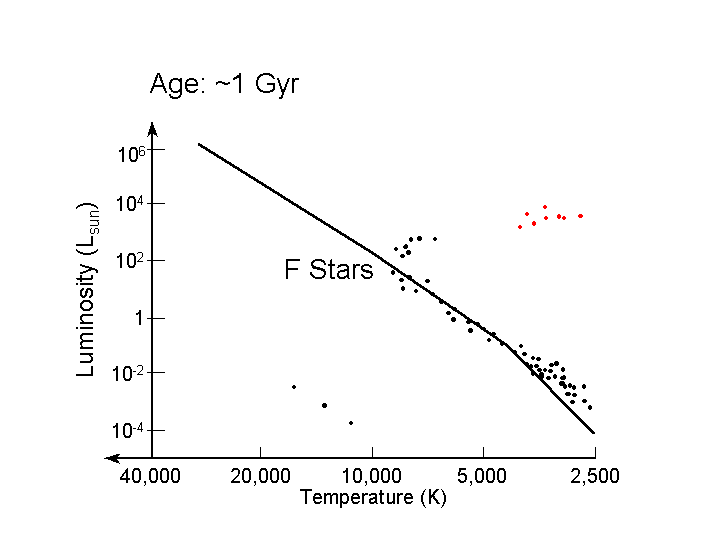
The final diagram is of a cluster which is 10 billion years old. The main sequence lifetime of a 1 solar mass star is 10 billion years, so stars with M = 1 Msun (L = 1 Lsun, spectral type G) are just turning off the main sequence. All the stars on the red giant branch are more massive than 1 solar mass. More white dwarf stars are also present.
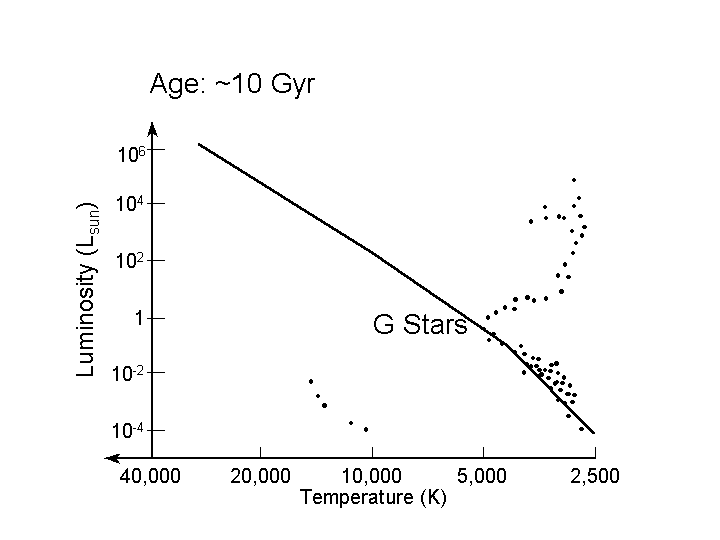
Fortunately, the mathematical models provide a good fit to the Hertzsprung-Russell (H-R) diagrams which are actually observed for clusters of stars.